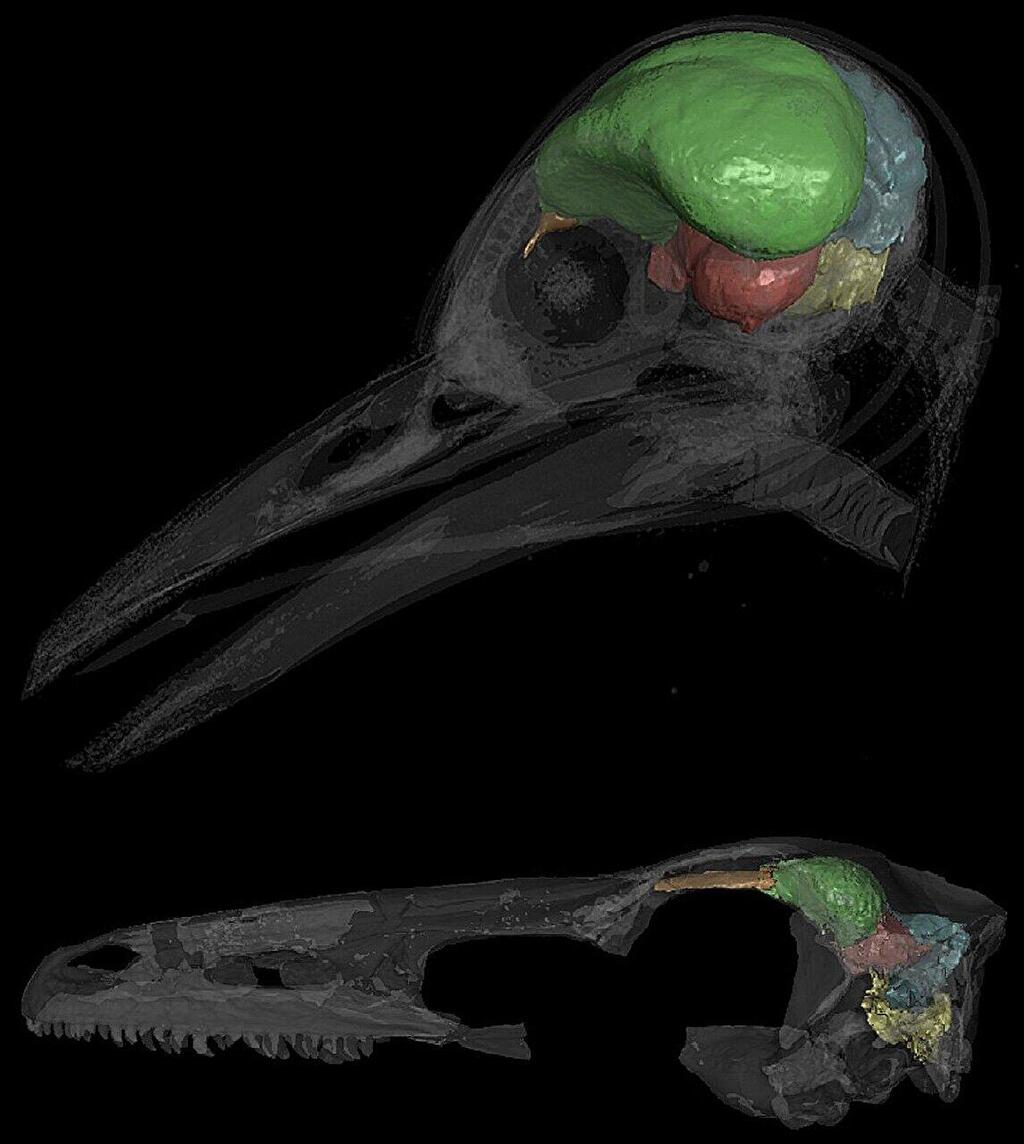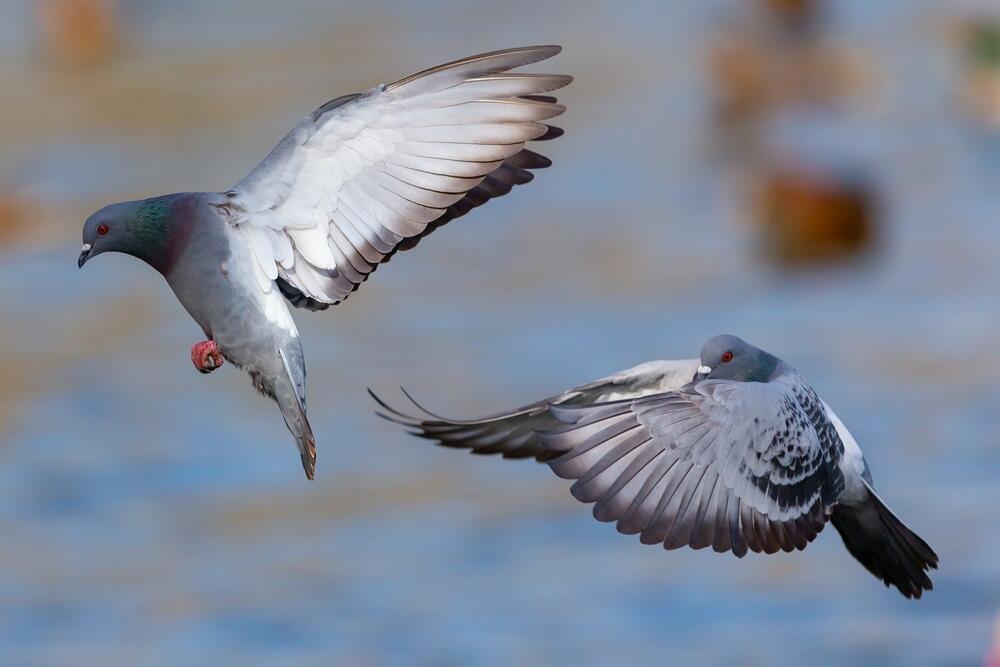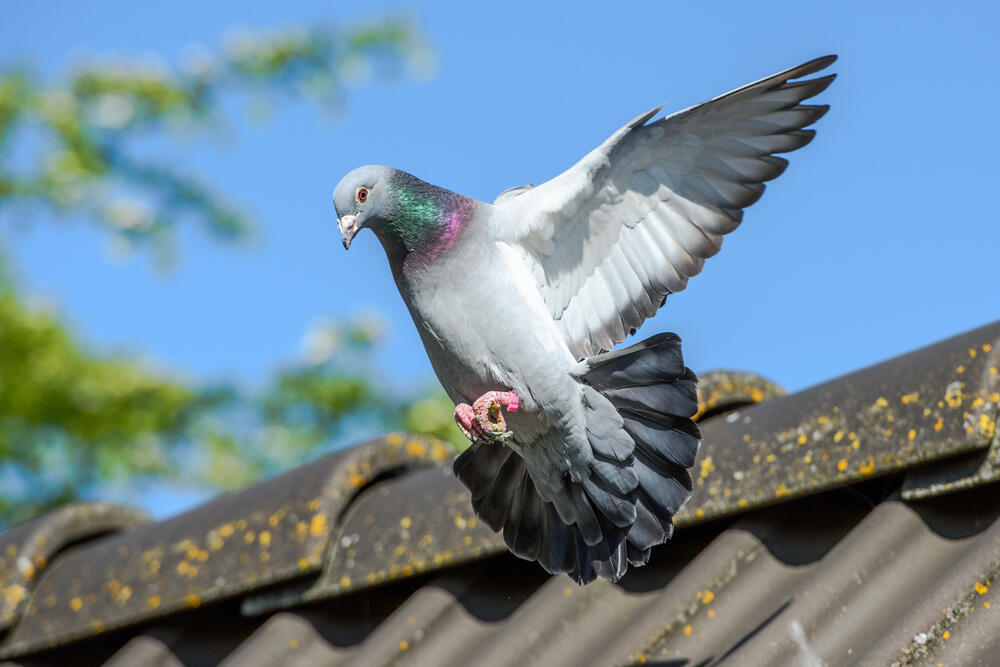Getting your Trinity Audio player ready...
Birds are among the most diverse groups of animals on Earth, with over 10,000 living species and richly documented fossils showing their evolution. But how did they acquire the ability to fly, an achievement only shared by two other groups of vertebrates?
More stories:
Evolutionary biologists from the Johns Hopkins University School of Medicine combined findings from Positron Emission Tomography (PET) – a nuclear medical imaging technique – of pigeons alongside studies of dinosaur fossils to answer an ongoing question in biology: How did the brains of birds develop to enable flight?
According to their findings, the answer lies in an adaptive growth in the size of the brain’s cerebellum region, located below the cerebrum and behind the brainstem. This region is involved, among other things, in the planning, steering and learning of motor functions among fossilized vertebrates.
"Powered flight among vertebrates is a rare event in evolutionary history. just three groups of vertebrates, or animals with a backbone, evolved to fly: extinct pterosaurs - the terrors of the sky during the Mesozoic period, which ended over 65 million years ago, bats and birds," said Dr. Amy Balanoff from the Johns Hopkins University School of Medicine.
The three groups’ evolutionary lines aren’t closely related, so the cause or number of factors that enabled all three to fly remains unclear. In addition to physical adaptations for flight, such as the evolution of long wings and certain types of feathers, Balanoff and her colleagues wanted to explore the brain characteristics that would facilitate flight.
For this purpose, Balanoff collaborated with biomedical engineers from New York’s Stony Brook University to compare the brain activity of modern pigeons before and after flight.
In a study whose findings were published in the Proceedings of the Royal Society B journal, the researchers used Positron Emission Tomography (PET), which is also used to observe metabolic processes in the human body, to compare activity in 26 brain regions when the birds were at rest compared to engaged in flight lasting 10 seconds.
PET scans use a glucose-like compound that allows tracking of its absorption in brain cells, indicating heightened activity and increased energy expenditure. Among the 26 regions, one area – the cerebellum – showed statistically significant increases in activity between rest and flight in all 10 birds examined.
The researchers also identified increased brain activity in what is known as optic flow pathways – a network of brain cells connecting the retina to the cerebellum – which process movement across the animal’s field of vision.
According to Balanoff, the findings regarding increased activity in the cerebellum and optic flow pathways weren’t necessarily surprising, as these regions were already known to play a significant role in flight.
The study, however, also presented new information on the connection between findings that the cerebellum enables flight in modern birds and the bird fossil documentation which showed how dinosaur-like avian ancestors began developing neural conditions to enable flight.
To achieve this, the researchers used a digital database of dinosaur endocasts, which resemble brains when filled. They identified and tracked a noticeable increase in the cerebellum’s size in some of the earliest members of Maniraptora – a group of dinosaurs considered the closest relatives to modern birds – which preceded winged dinosaurs like the Archaeopteryx.
The researchers noted that their study included simple flight, meaning they used a course lacking obstacles and with a relatively easy flight path, indicating other brain regions might be more active during complex flight maneuvers.
Now, they aim to refine their analysis of the specific regions in the cerebellum that enable readiness for flight, including the neural connections between different structures.
“At Johns Hopkins, the biomedical community has a wide-ranging set of tools and technology to help us understand evolutionary history and link our findings to fundamental research on how the brain works," said Dr. Gabriel Bever from the School of Medicine at Johns Hopkins University.




